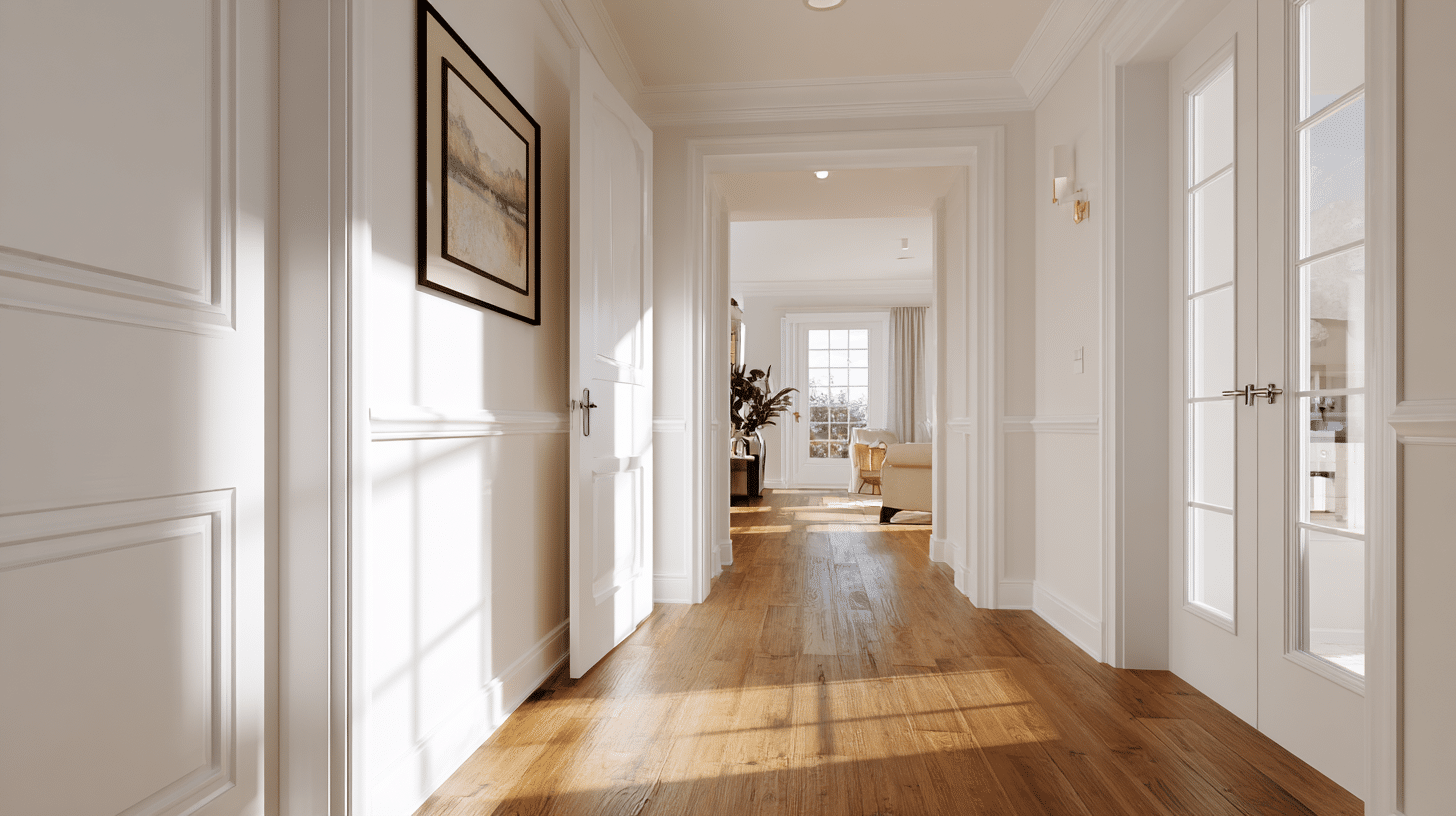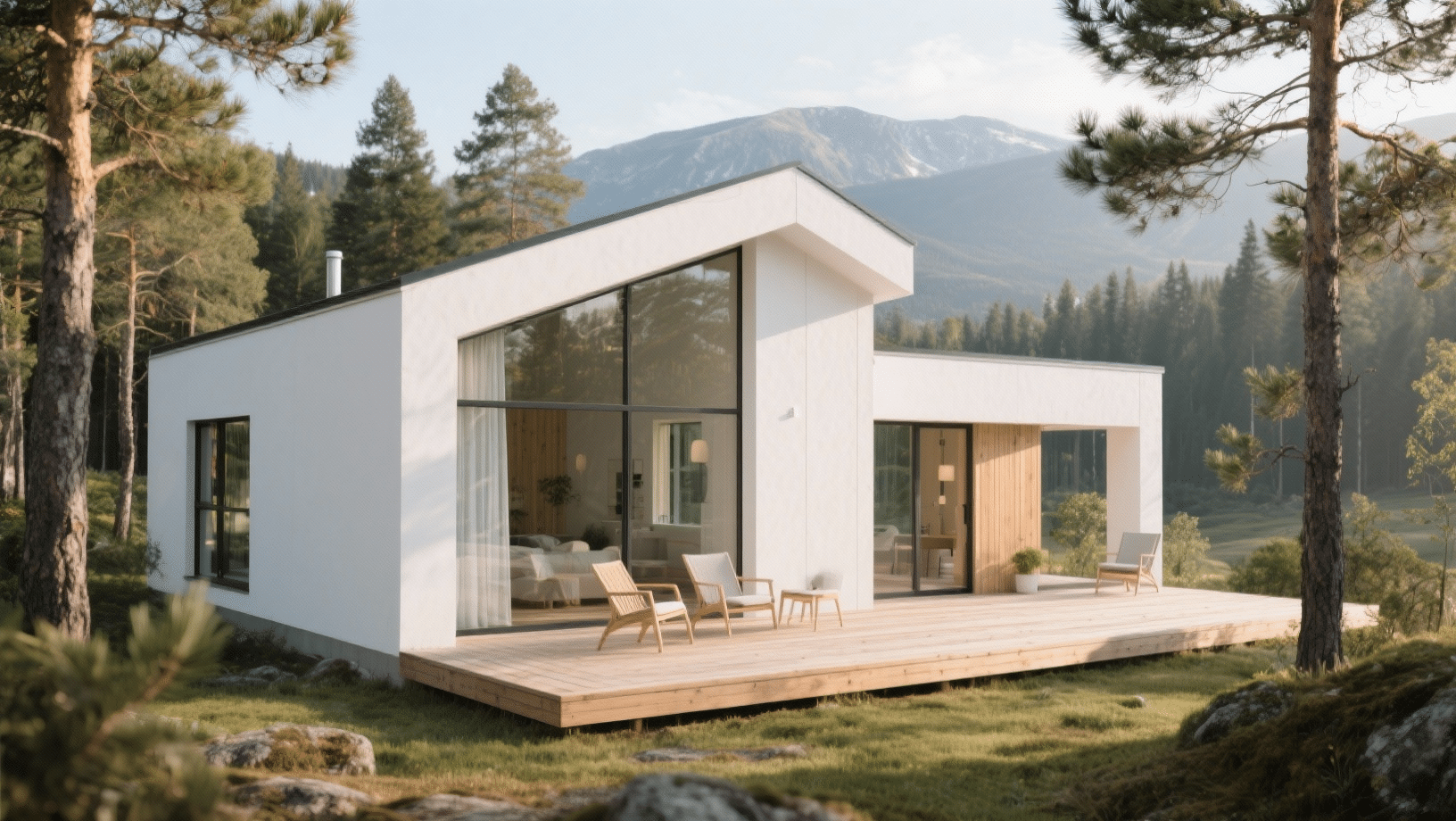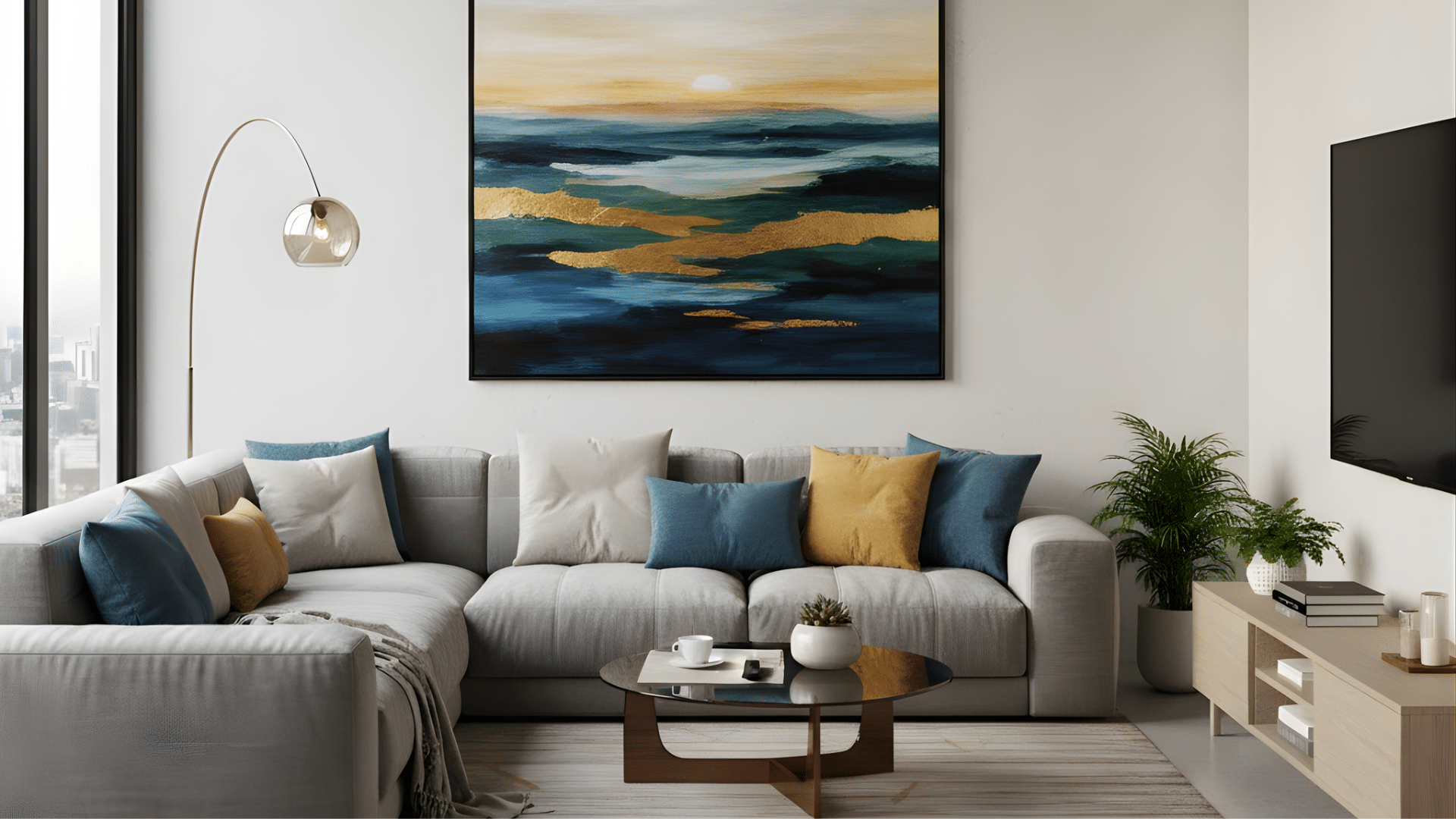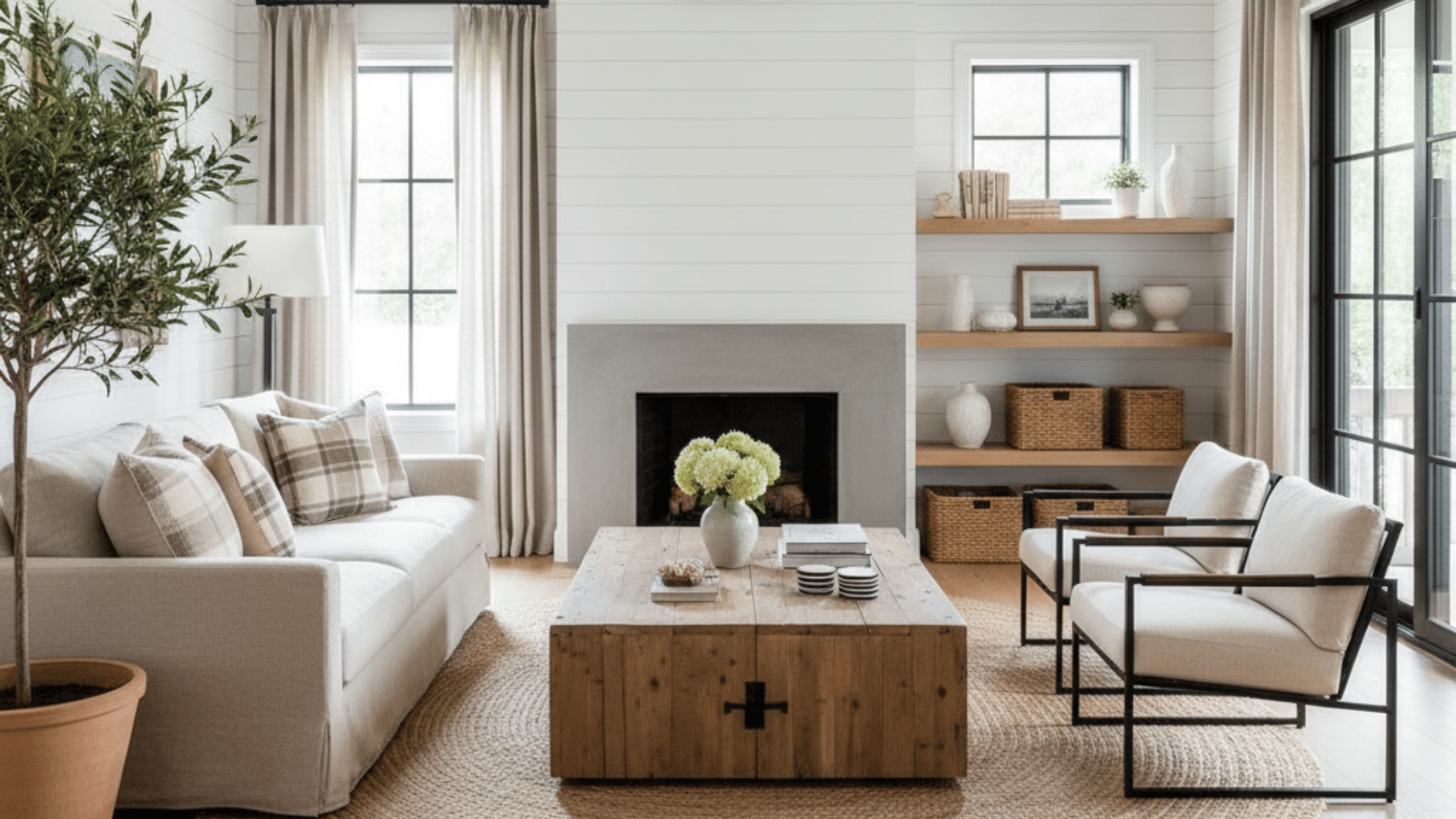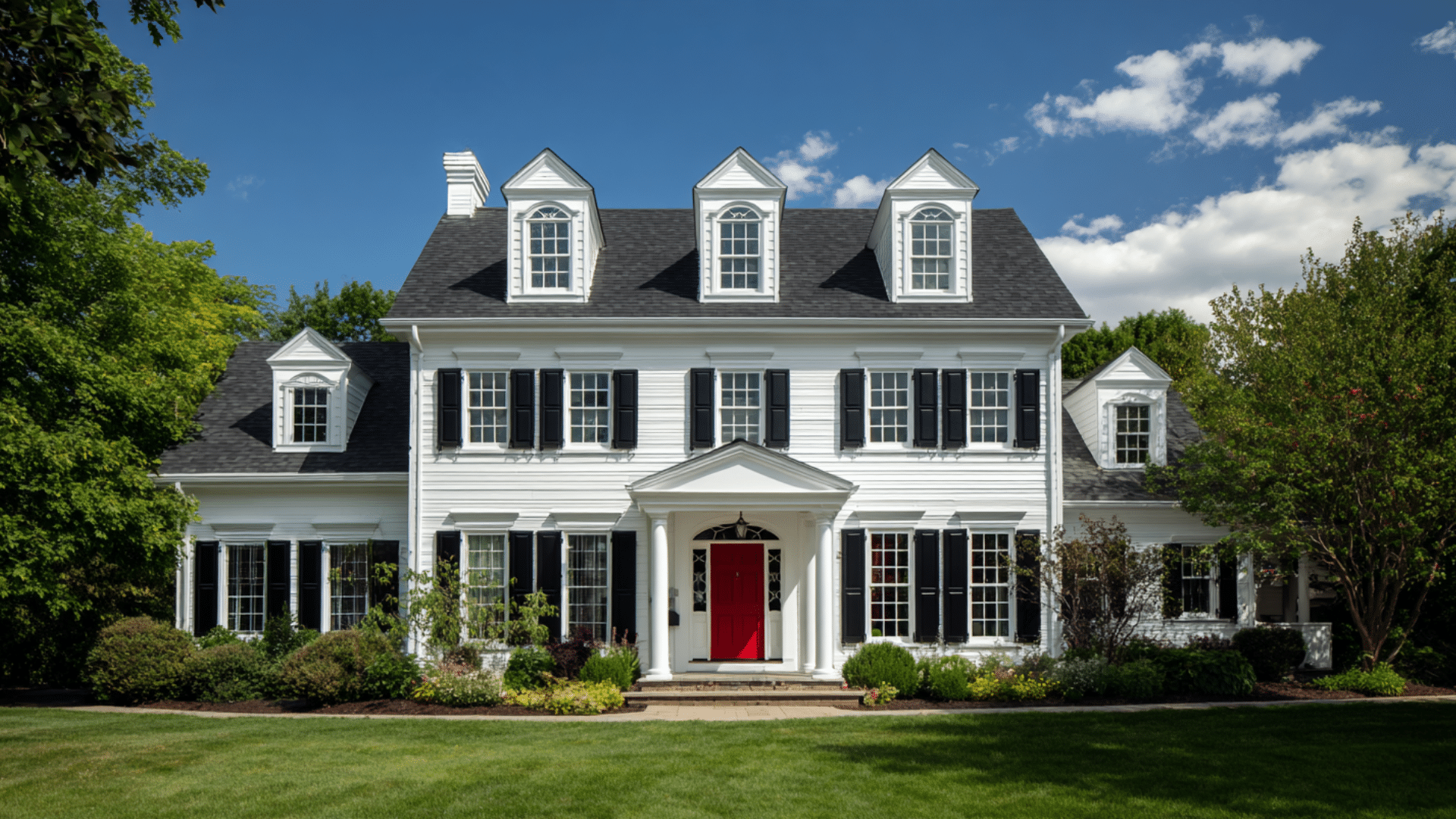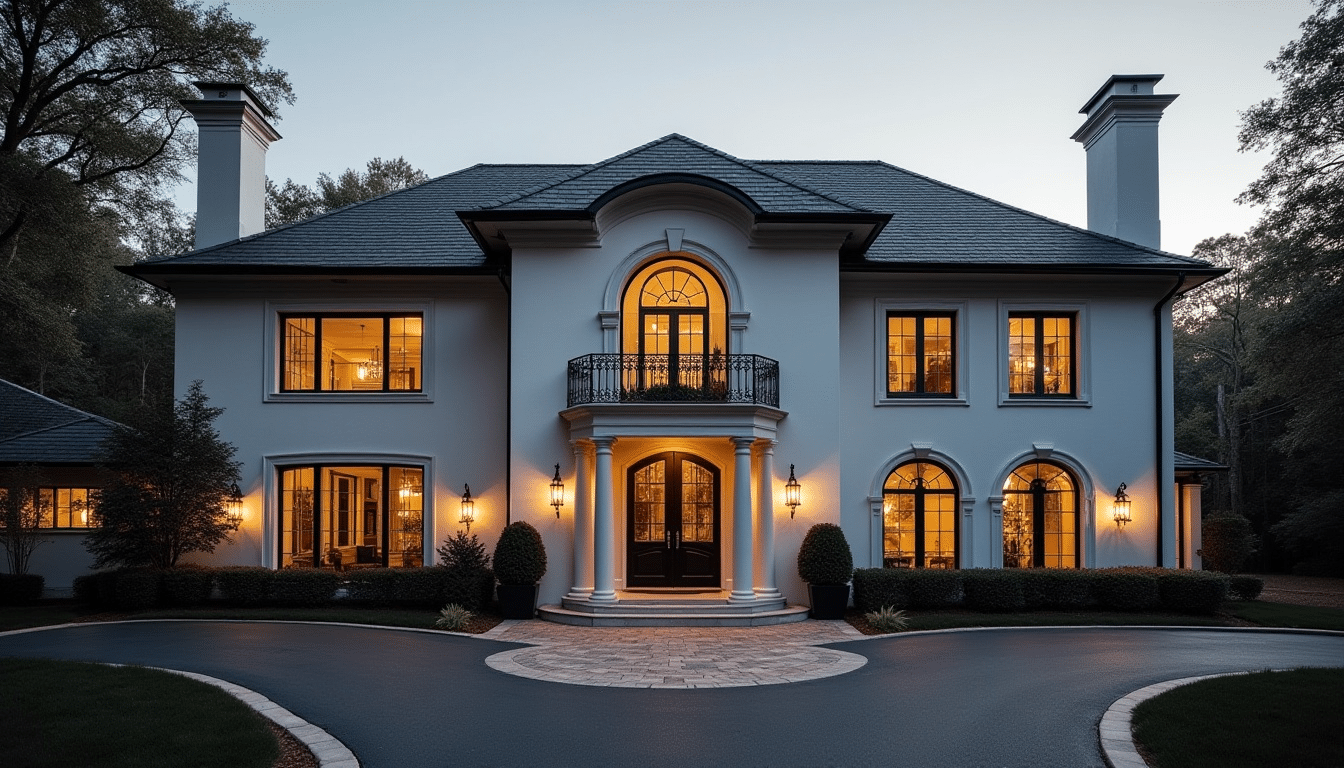Your home’s interior doors do more than just separate rooms. They set the mood, define your style, and can make or break your overall design vision.
Yet many homeowners overlook these crucial elements when planning their interiors. The right door style can turn your space from ordinary to outstanding.
In this blog, we’ll cover the most popular interior door styles, from classic panel doors to modern flush designs.
You’ll learn about various materials and how to select doors that complement your home’s character, enhancing both its functionality and artistic appeal.
Why Door Styles Matter in Home Design
Interior doors play a bigger role in your home’s design than most people realize. They’re like the connecting threads that tie each room together, creating flow and consistency throughout your space.
A well-chosen door style can make your hallways feel more spacious, your rooms more inviting, and your entire home more cohesive.
On the flip side, mismatched or outdated doors can make even the most beautifully decorated rooms feel disjointed. Beyond their appearance, interior doors do impact how your home functions.
They control privacy, sound, and light between rooms. The right door can help define spaces in an open floor plan or create better separation when quiet is needed.
Your door choices set the tone for your home’s personality, whether that’s traditional, modern, or somewhere in between.
Different Interior Door Designs
From traditional to ultra-modern to a painted door, the perfect interior door design can completely change your home’s character.
Let’s find the most popular options available today.
1. Panel Doors
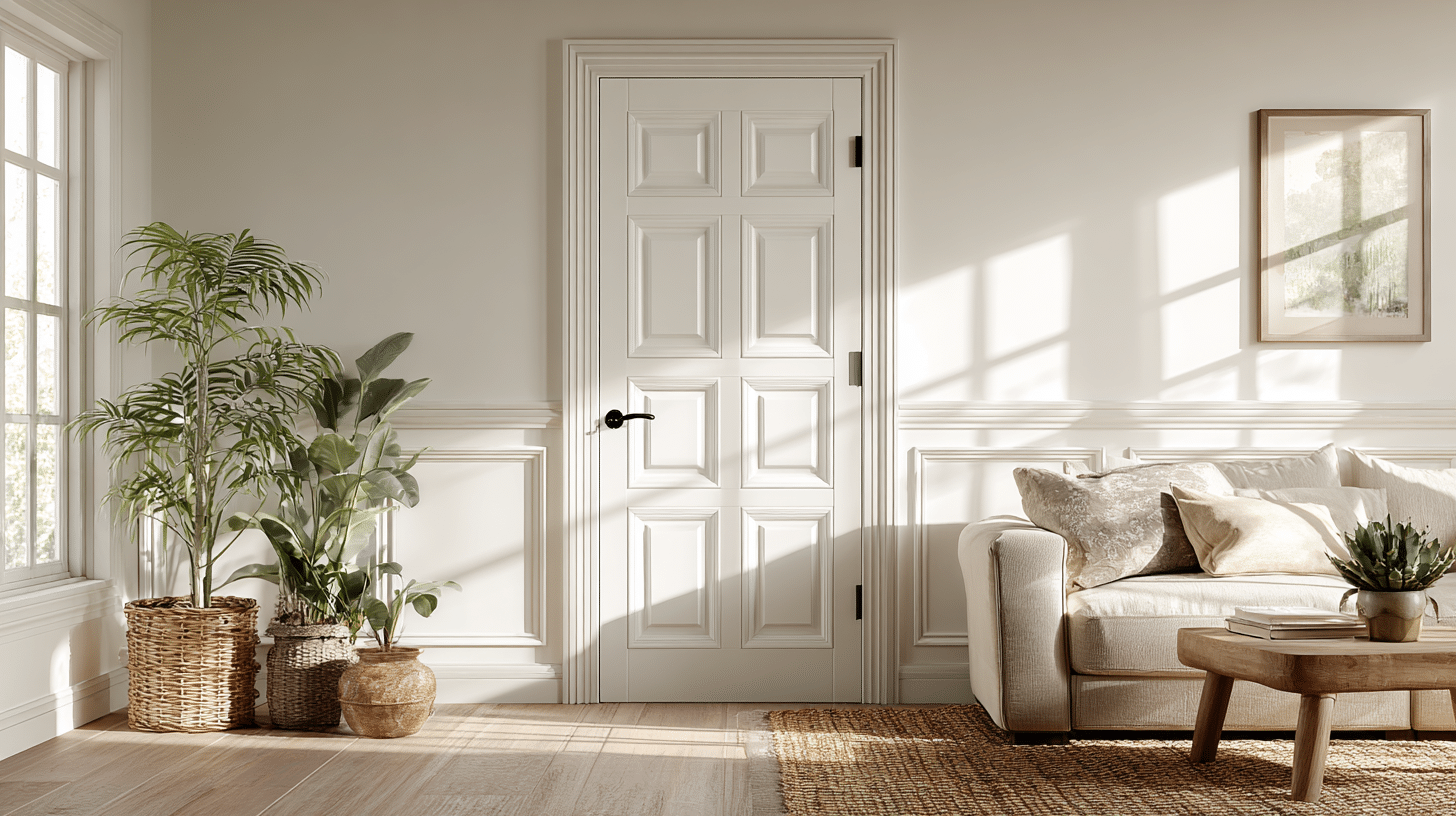
Classic raised or flat panels create classic appeal. These doors work well in traditional and transitional homes.
Available in various panel configurations, they offer flexibility and can be painted or stained to match your decor perfectly.
2. Flush Doors
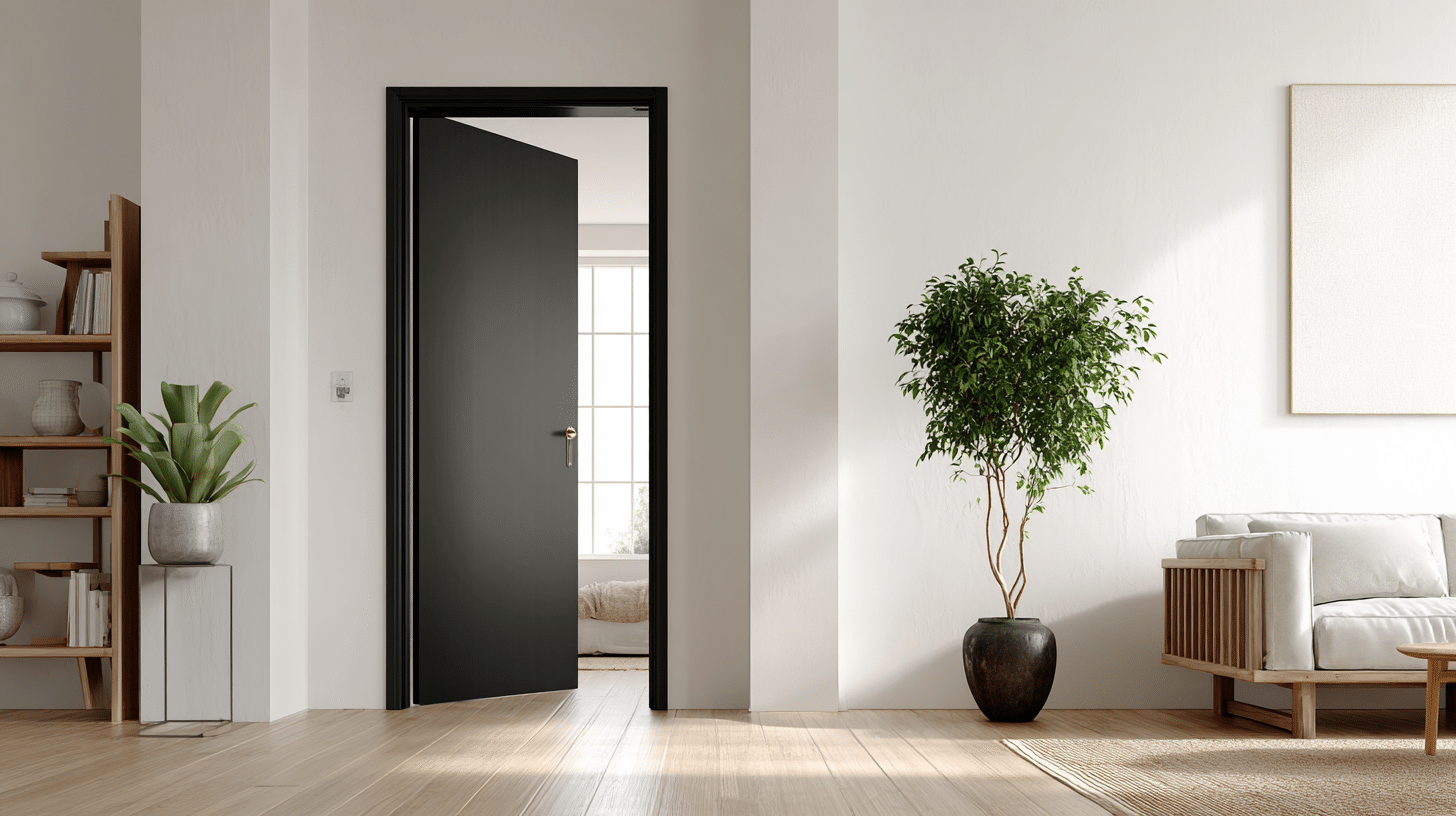
Clean, flat surfaces with no raised elements give a sleek, modern look. Perfect for contemporary homes, they’re easy to paint and maintain.
Their simple design makes rooms appear larger and complements minimalist decor styles well.
3. French Doors
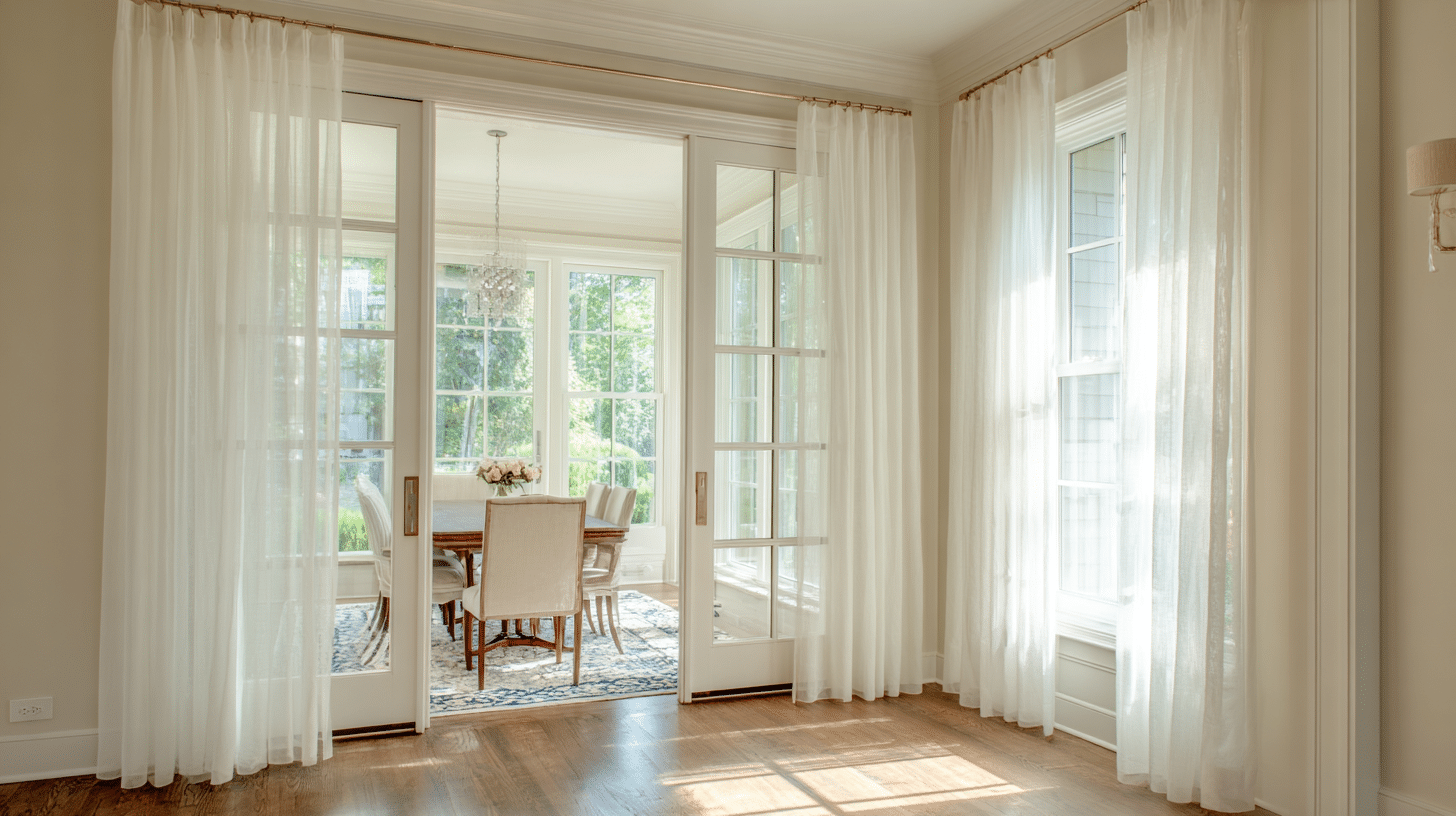
Glass panels, from top to bottom, allow light to flow freely between rooms. These doors add grace and openness to your space.
They’re perfect for home offices, dining rooms, or anywhere you want a visual connection without losing separation.
4. Barn Doors
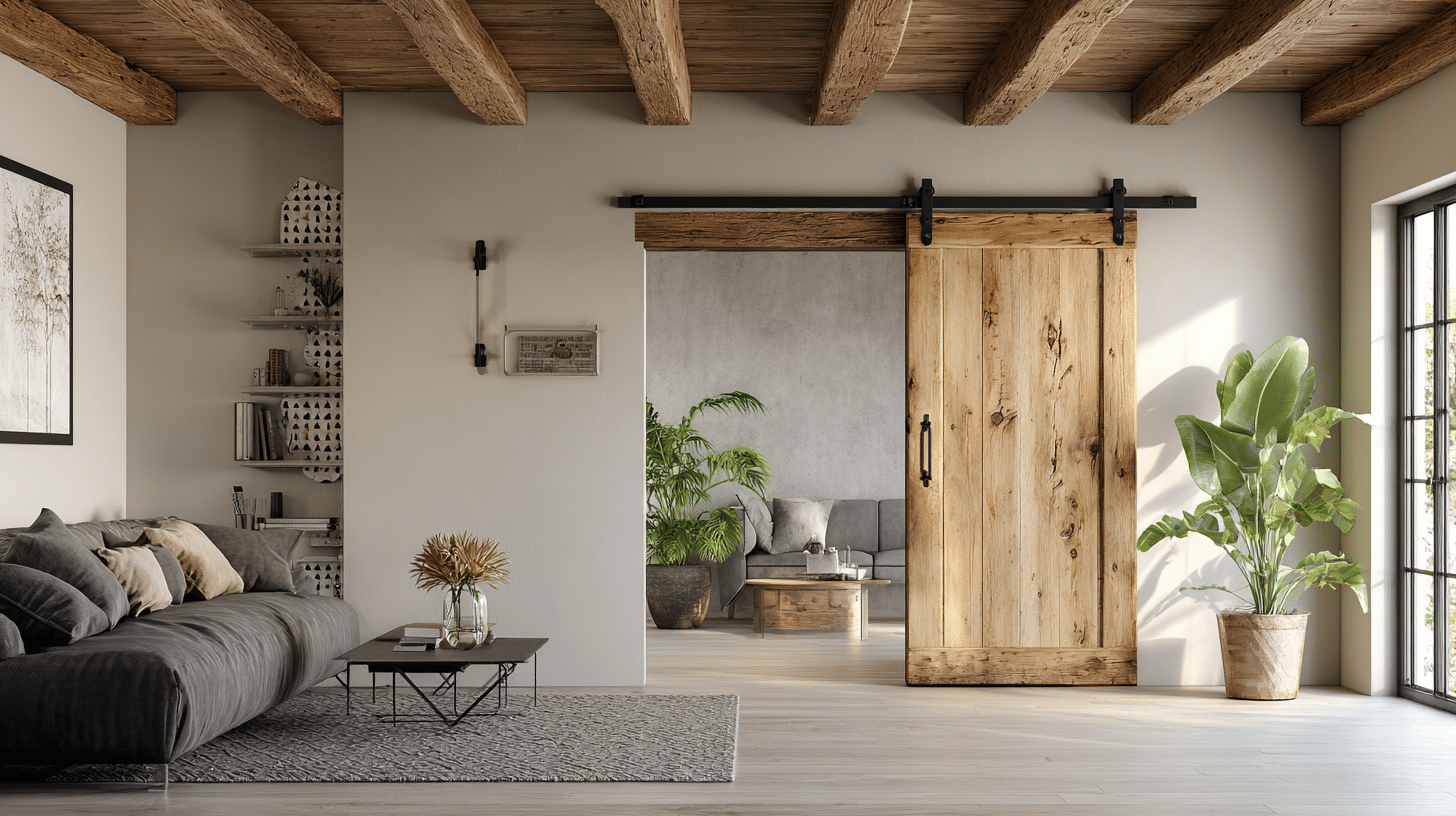
Sliding on exposed tracks, these doors save floor space and add rustic charm. They’ve become popular in modern farmhouse designs. Great for closets, bathrooms, or pantries where space is limited but style is essential.
5. Pocket Doors
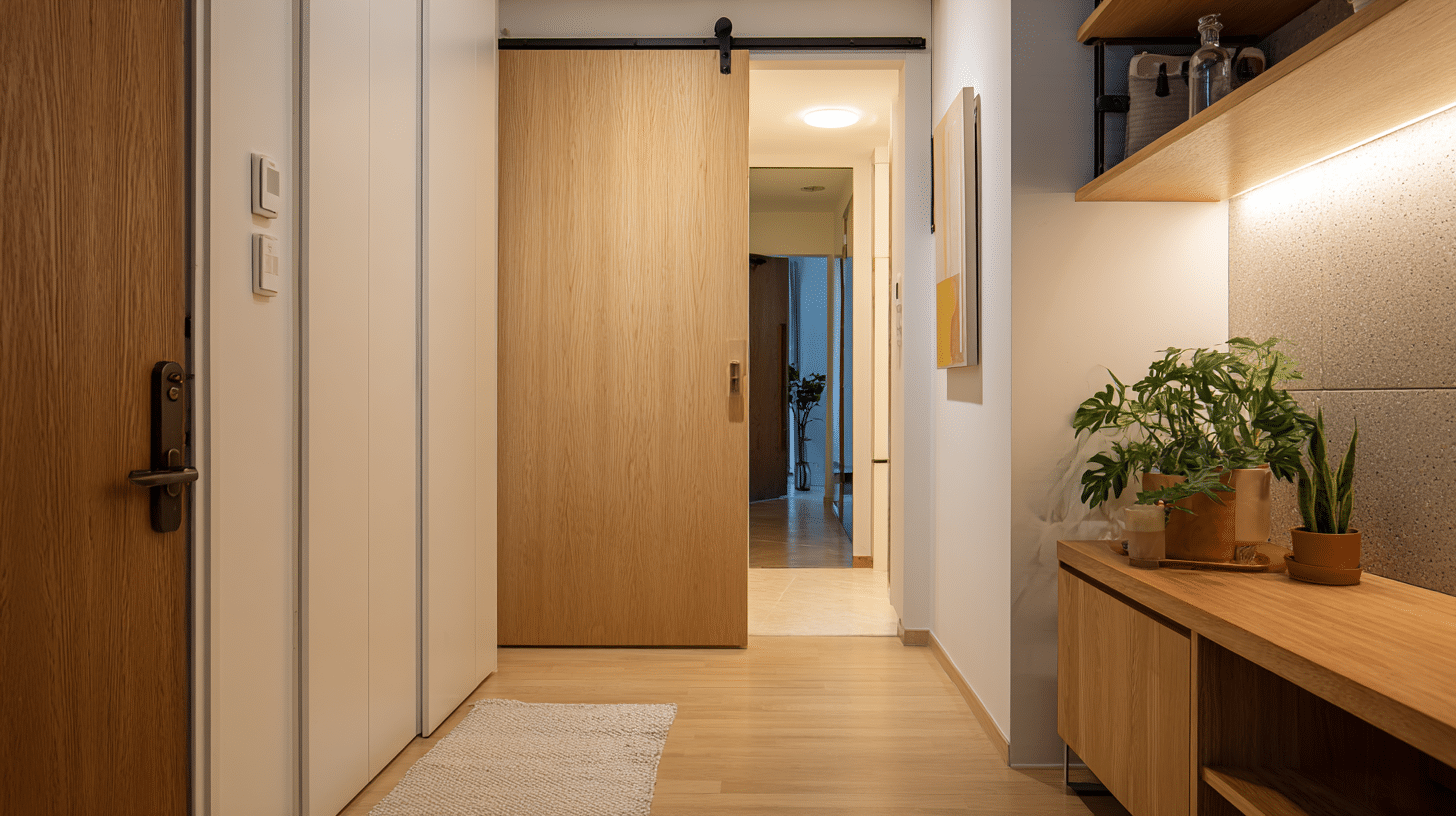
These doors slide into wall cavities, completely disappearing when open. They’re space-savers perfect for tight areas.
Popular in small homes and apartments, they provide full doorway access without taking up floor space for door swings.
6. Bifold Doors
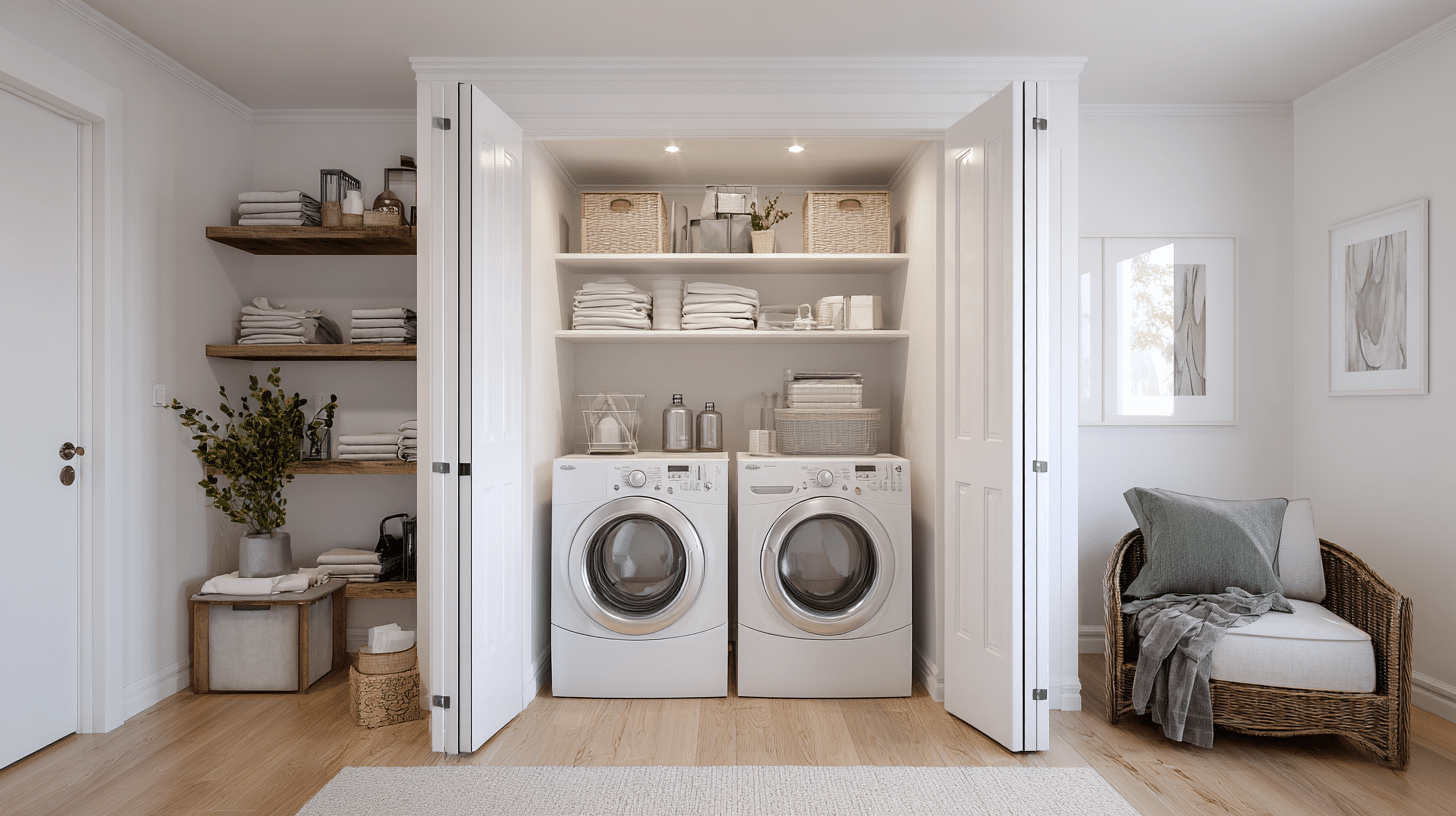
Two panels fold together when opening, using less space than standard swing doors. Common for closets and laundry rooms, they provide full access to openings.
They work well in both modern and traditional settings.
7. Rustic Wooden Plank Doors
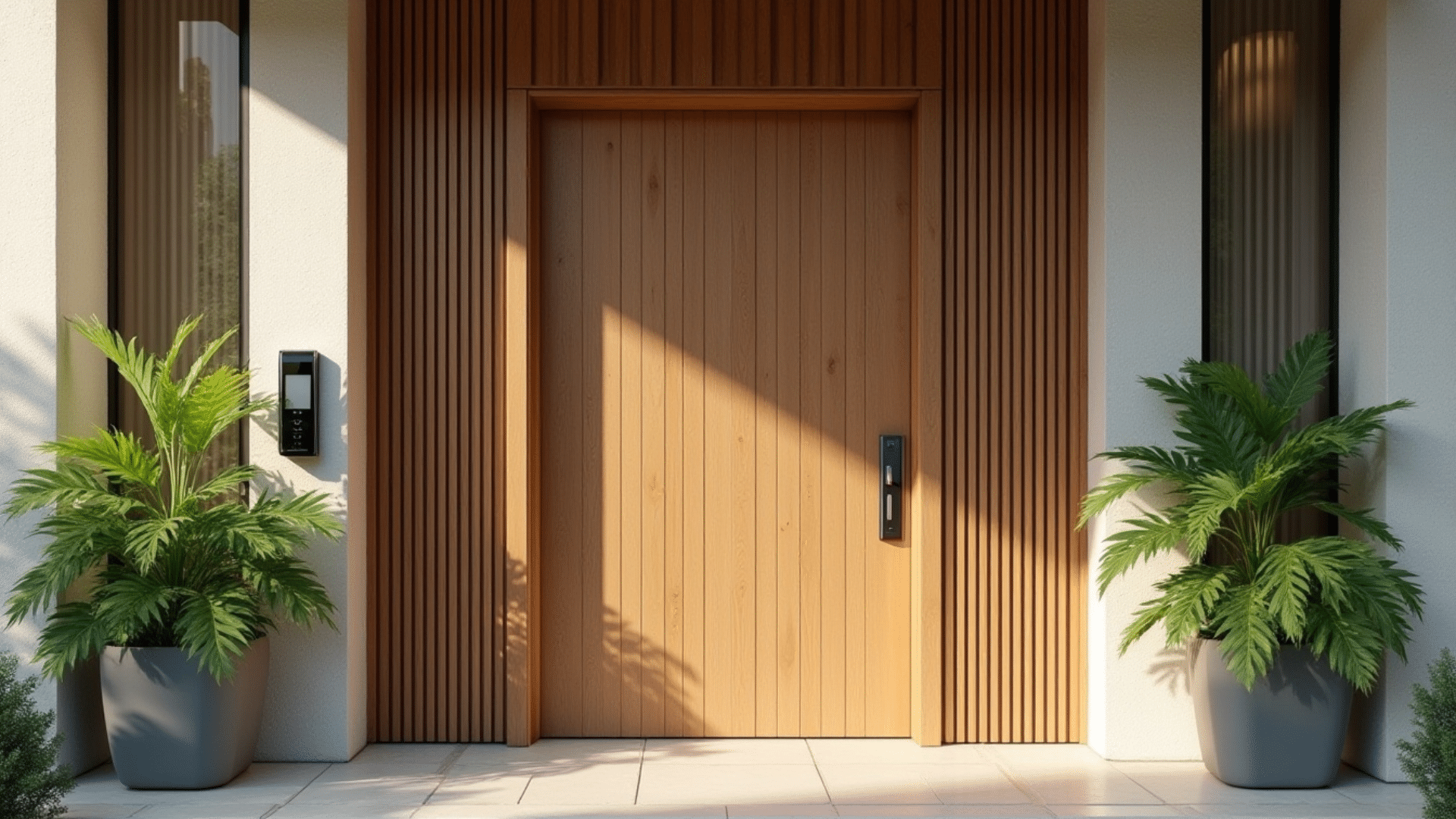
Rustic plank doors, crafted from wide boards with natural textures, add warmth and timeless charm. Sturdy hardware and visible wood grain highlight their authenticity.
These doors suit farmhouse, cottage, or rustic-inspired homes, creating inviting entrances and cozy, character-rich interiors
8. Louvered Doors
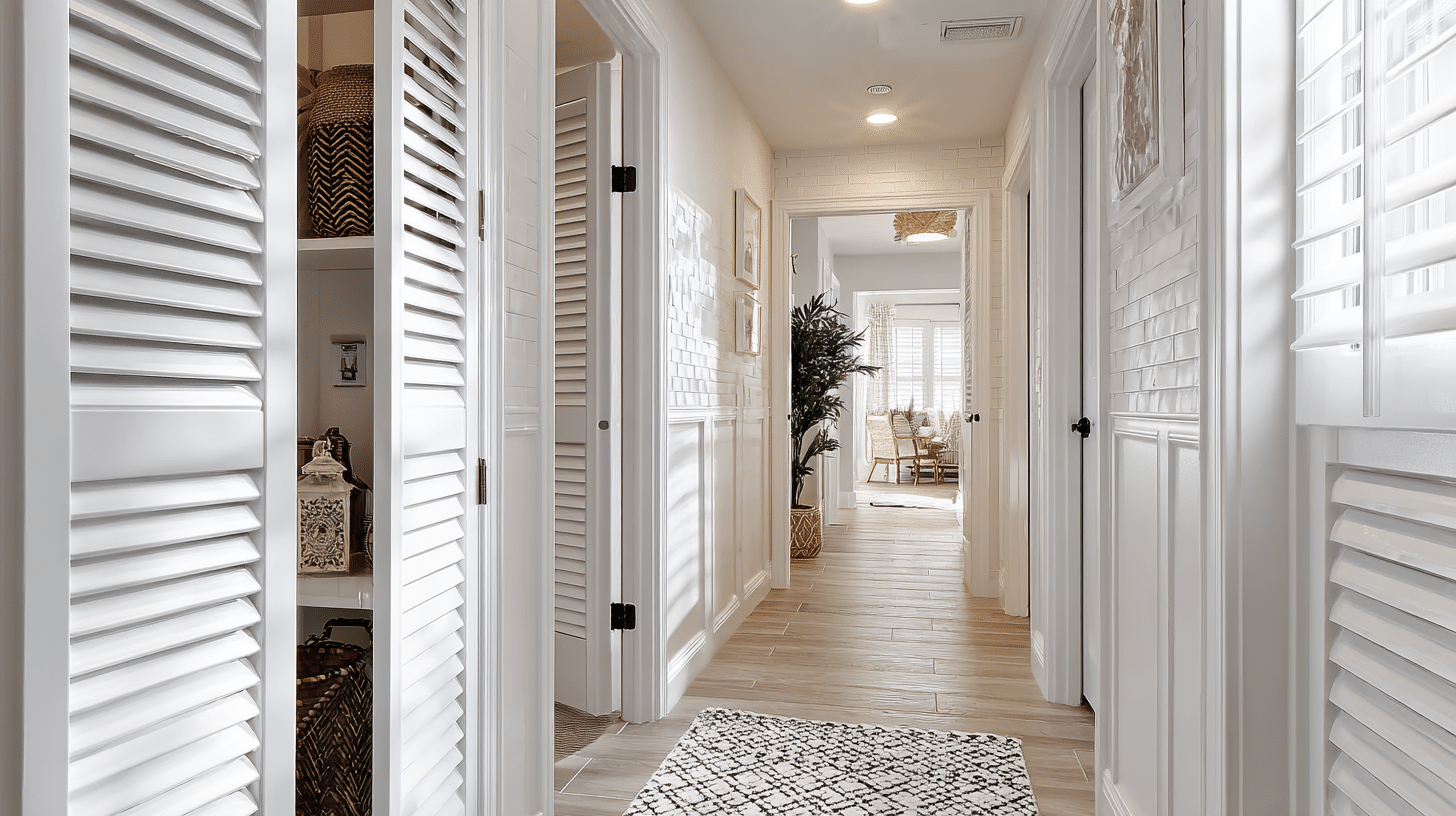
Horizontal slats allow air circulation while providing privacy. Popular for closets, laundry rooms, and tropical-style homes. They prevent moisture buildup and add textural interest.
Available in various slat sizes to match your style preferences.
9. Glass Panel Doors
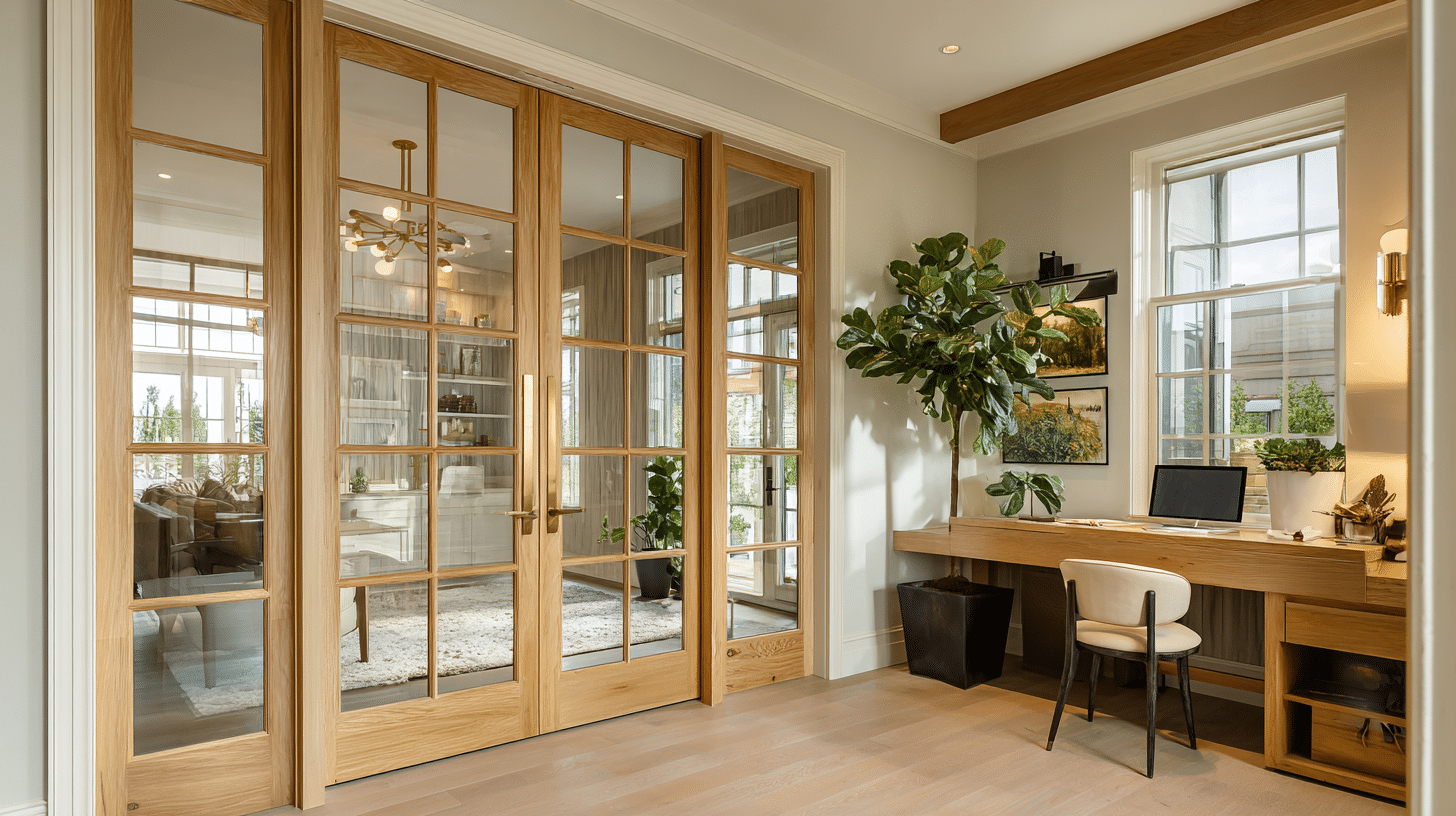
Solid frames with glass inserts create light flow between spaces. They maintain room separation while keeping areas bright and open.
Perfect for offices, dining rooms, or anywhere you want privacy without blocking natural light completely.
10. Shaker Style Doors
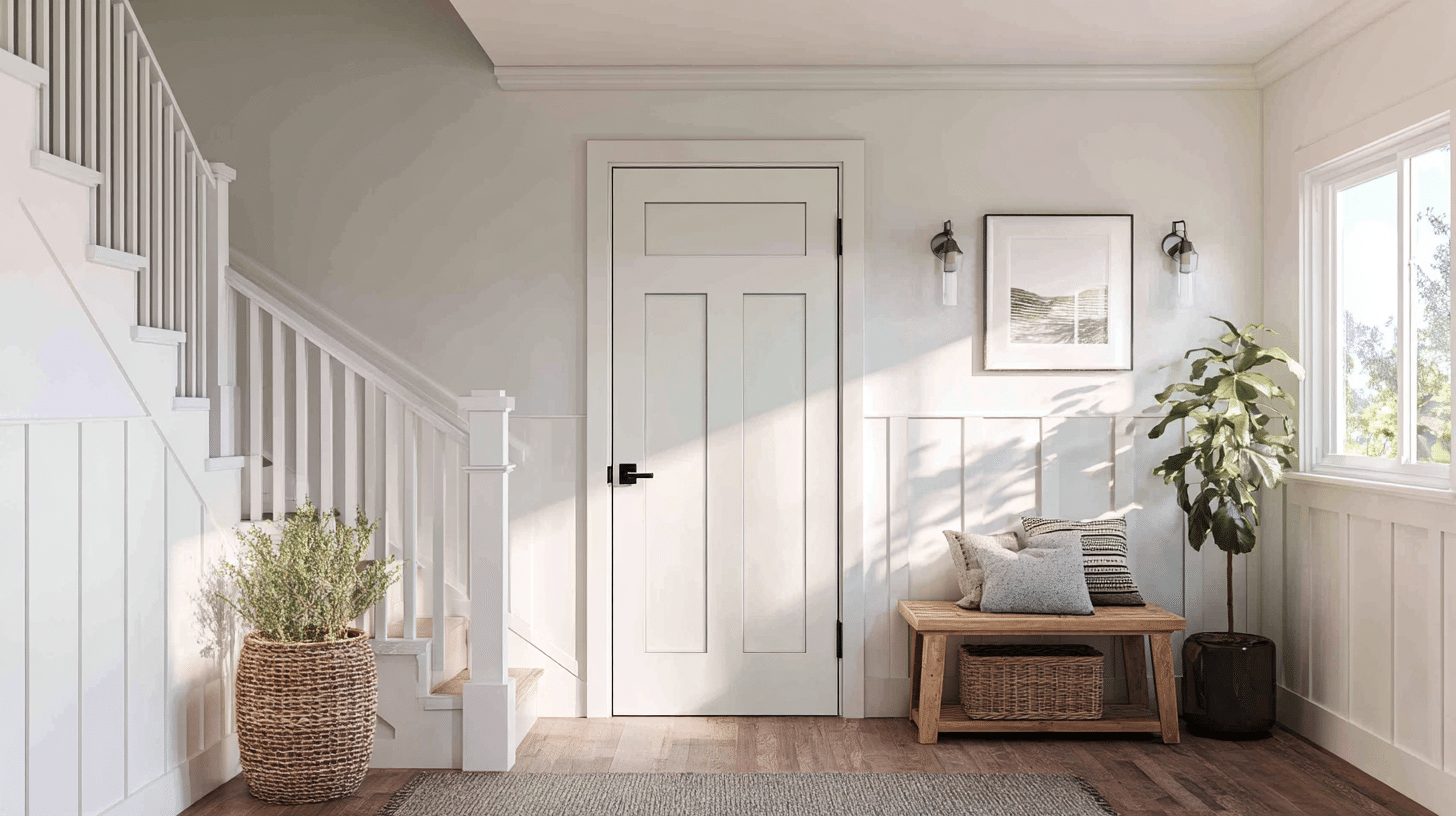
Simple, clean lines with minimal ornamentation define this classic American style. The five-piece construction, featuring a flat center panel, creates a classical appeal.
They work in both traditional and contemporary settings, offering flexibility and understated grace.
11. Mission Style Doors
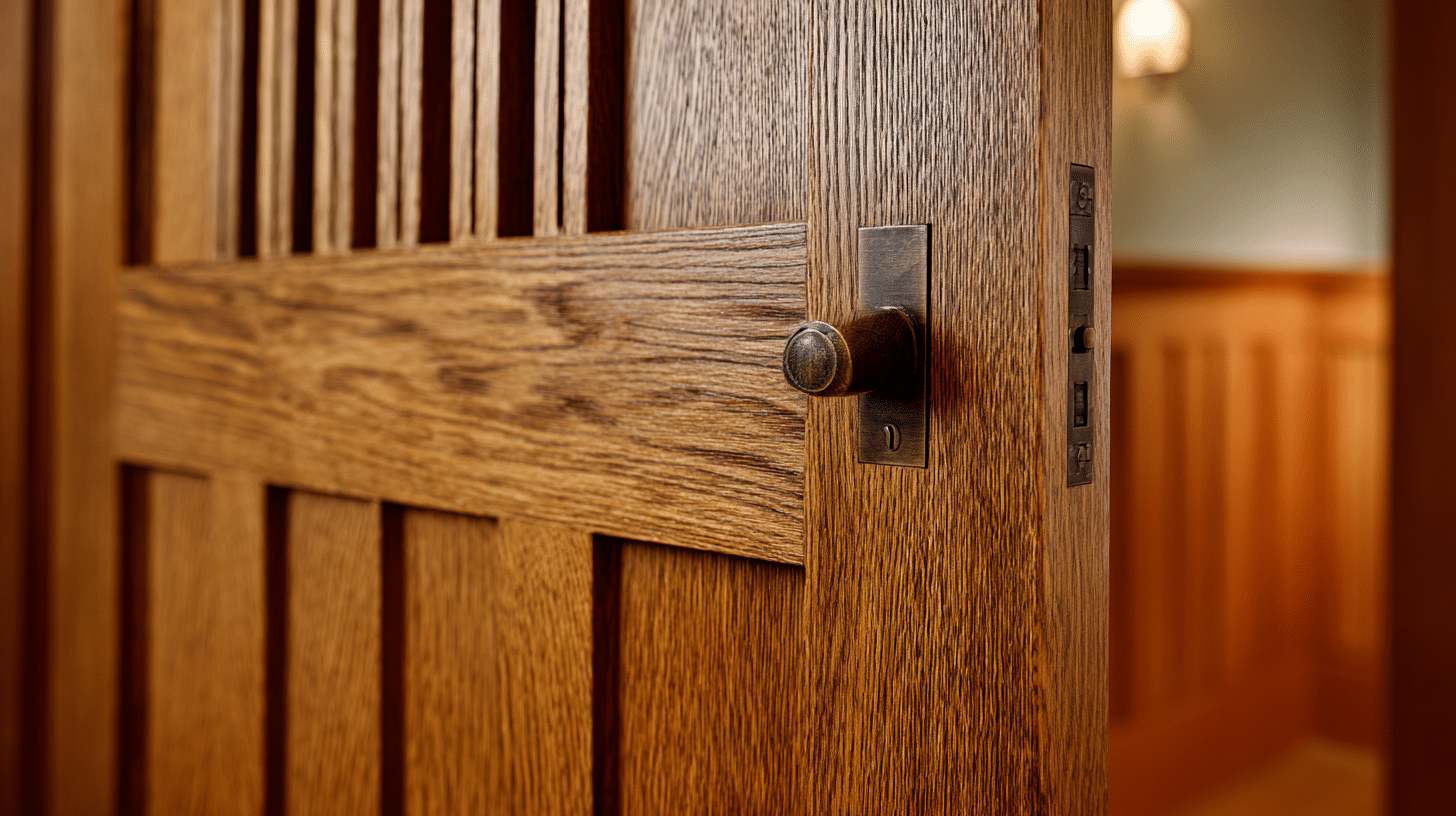
Inspired by the Arts and Crafts movement, featuring clean geometric lines and natural materials. Often made from oak or other hardwoods with visible grain.
Perfect for craftsman-style homes or anywhere you want a handcrafted, quality appearance.
12. Victorian Style Doors
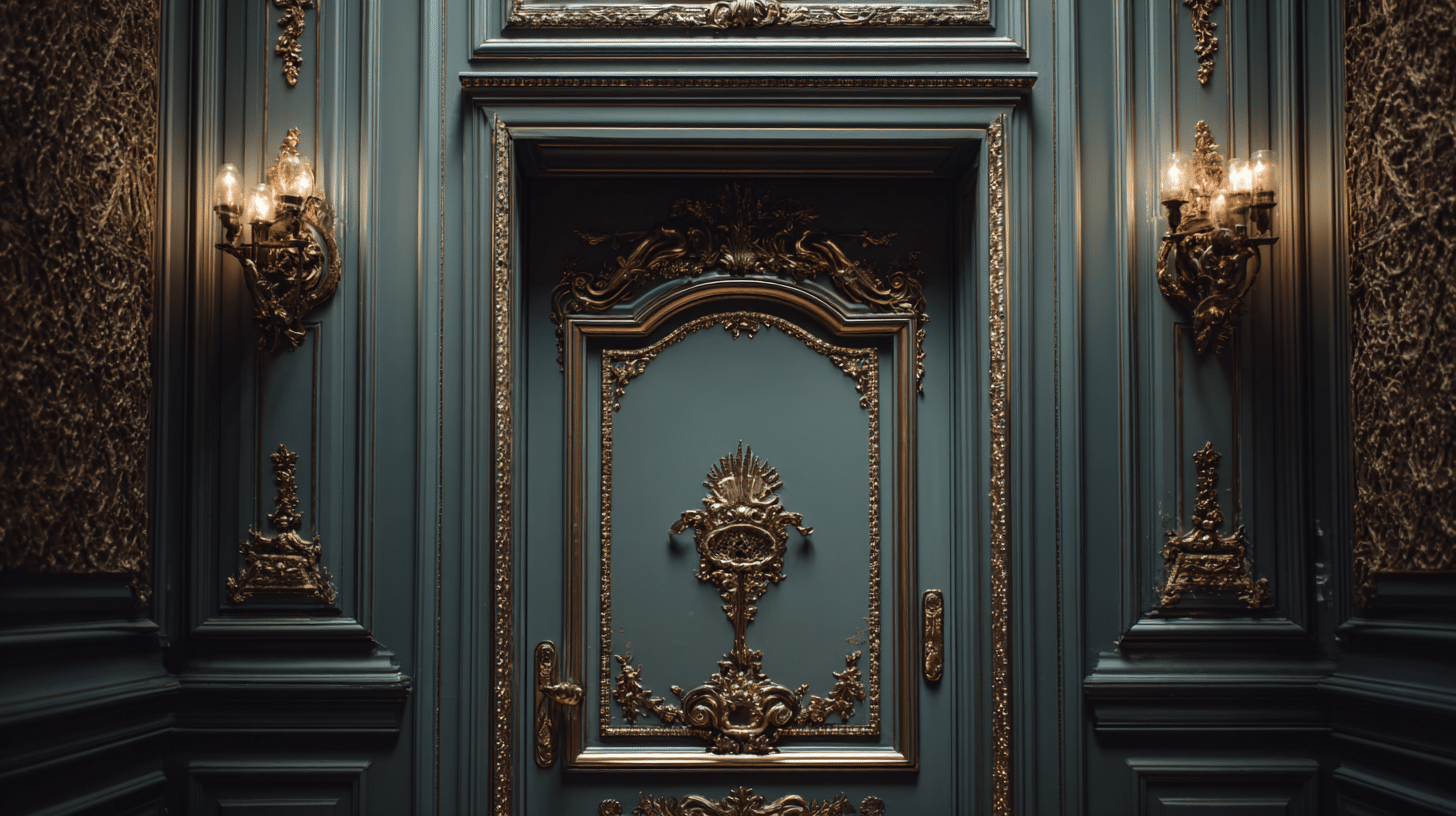
Ornate details, raised panels, and decorative molding characterize this elaborate style. Perfect for historic homes or spaces wanting traditional grandeur.
These doors make strong design statements and are best suited for formal settings, complemented by period-appropriate hardware.
13. Modern Slab Doors
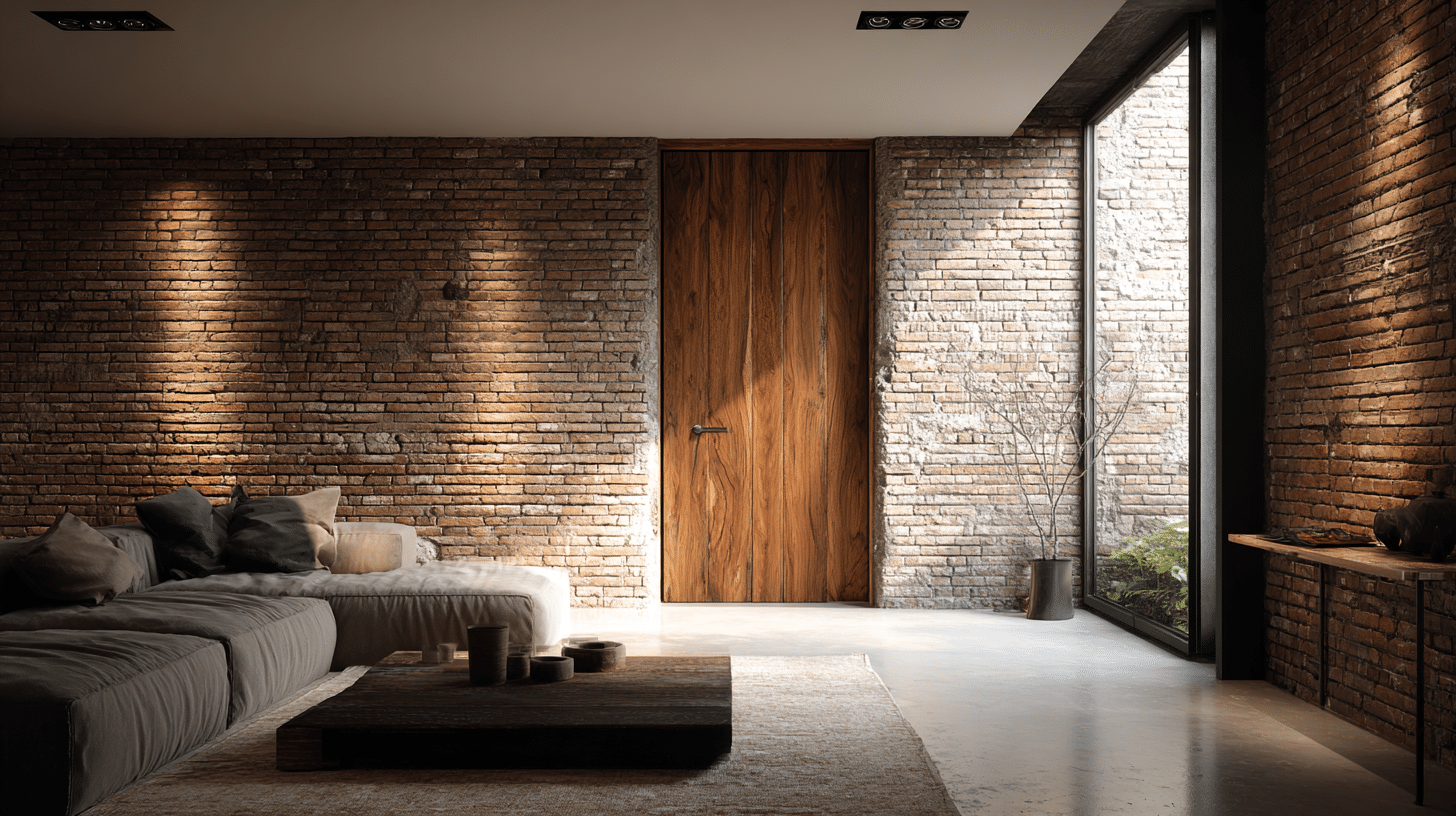
Completely flat surfaces without any raised elements or decorative details. Ultra-minimalist design perfect for contemporary and industrial-style homes.
They create clean lines and can be finished in bold colors or natural wood tones.
14. Mirrored Doors
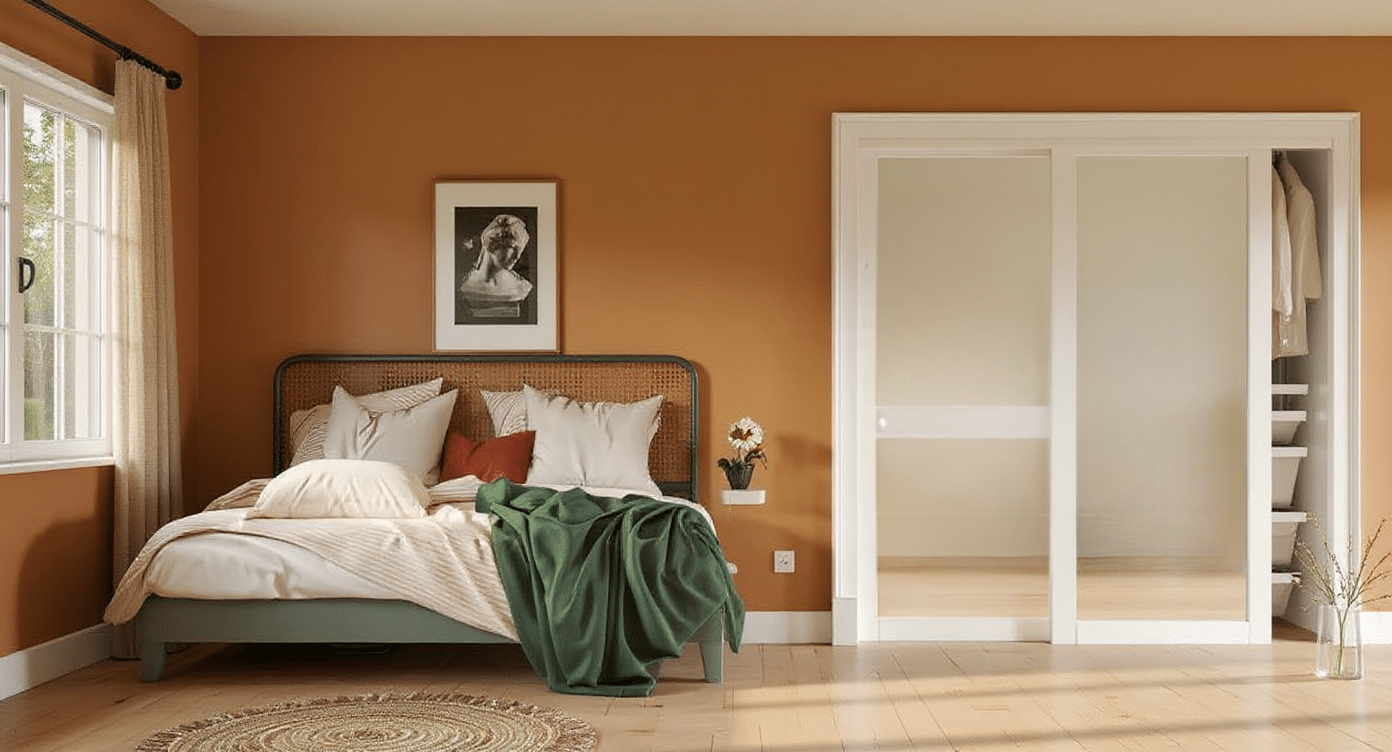
Full-length mirrors make small spaces appear larger and brighter. Perfect for bedrooms, bathrooms, and closets where you need both function and space enhancement.
They reflect light throughout rooms, eliminating the need for separate mirrors.
15. Panel Doors with Carved Details
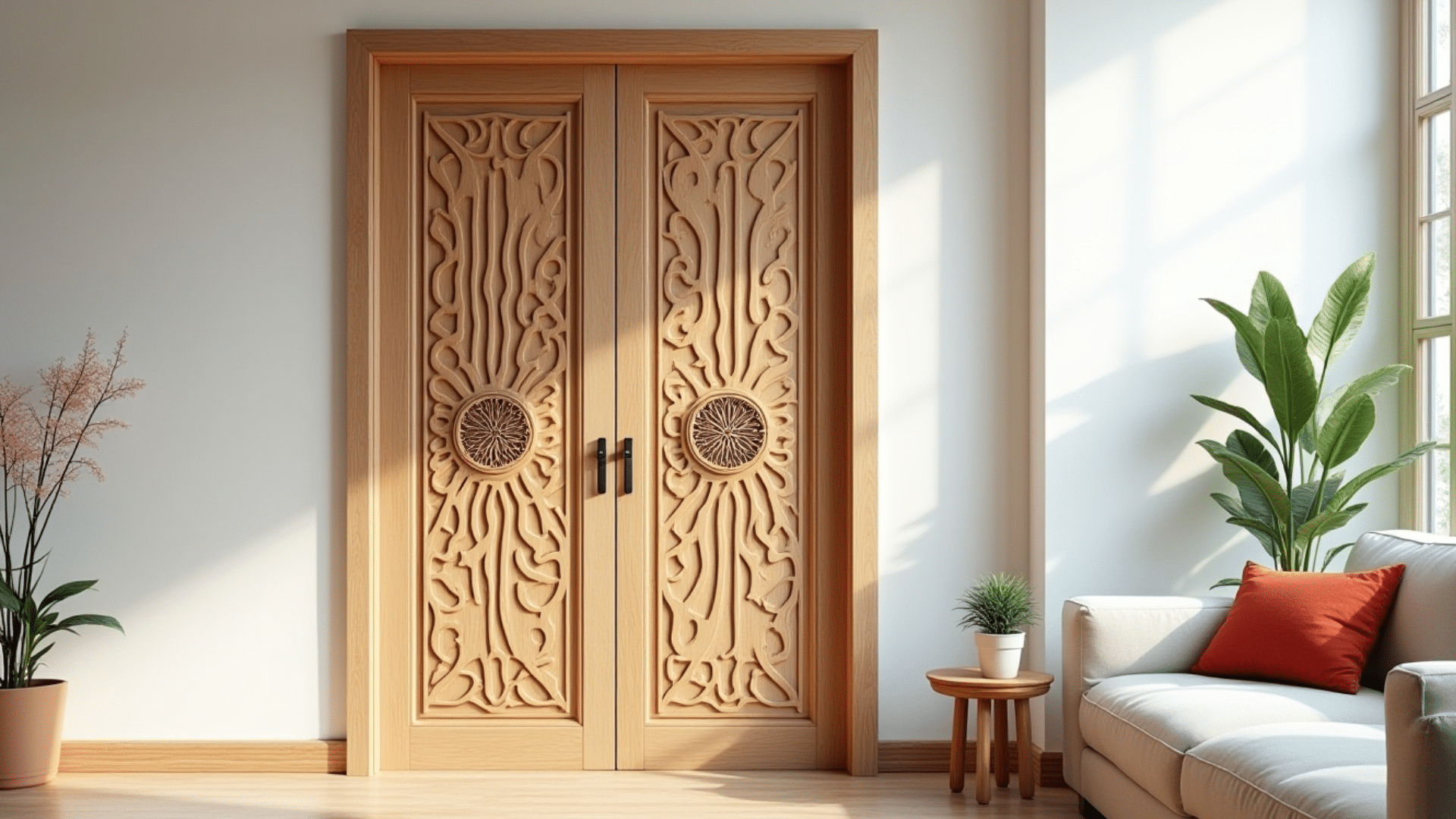
Panel doors with carved details bring timeless character to any home. The raised panels and subtle moldings create visual depth without overwhelming the space.
These doors work beautifully in hallways, bedrooms, or studies, blending seamlessly with both traditional and transitional interiors.
16. Sliding Glass Doors
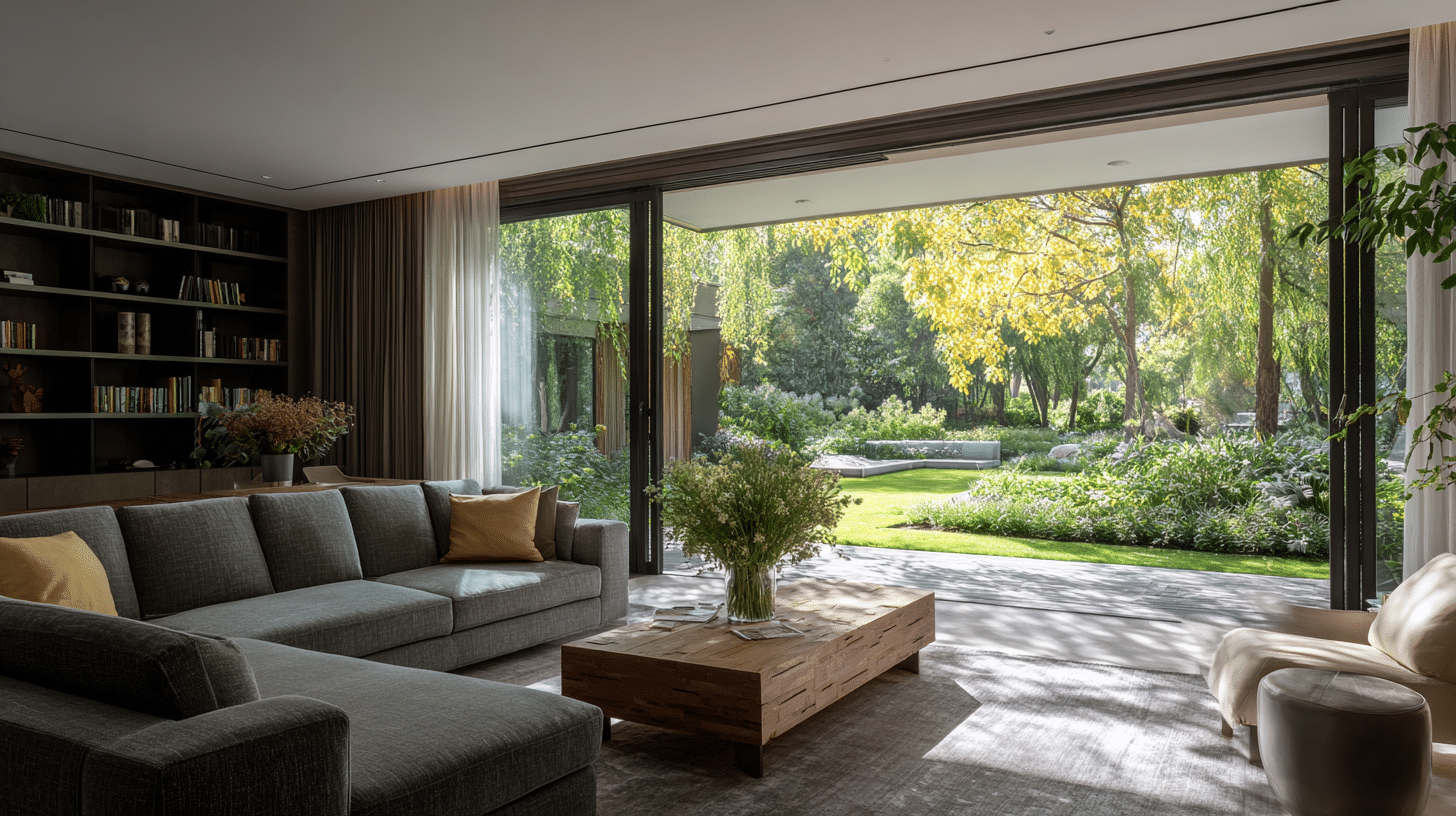
Large glass panels in sliding frames bring maximum light and modern appeal. Perfect for home offices, studies, or anywhere you want transparency with sound control.
They create contemporary looks while maintaining room separation when needed.
17. Accordion Doors
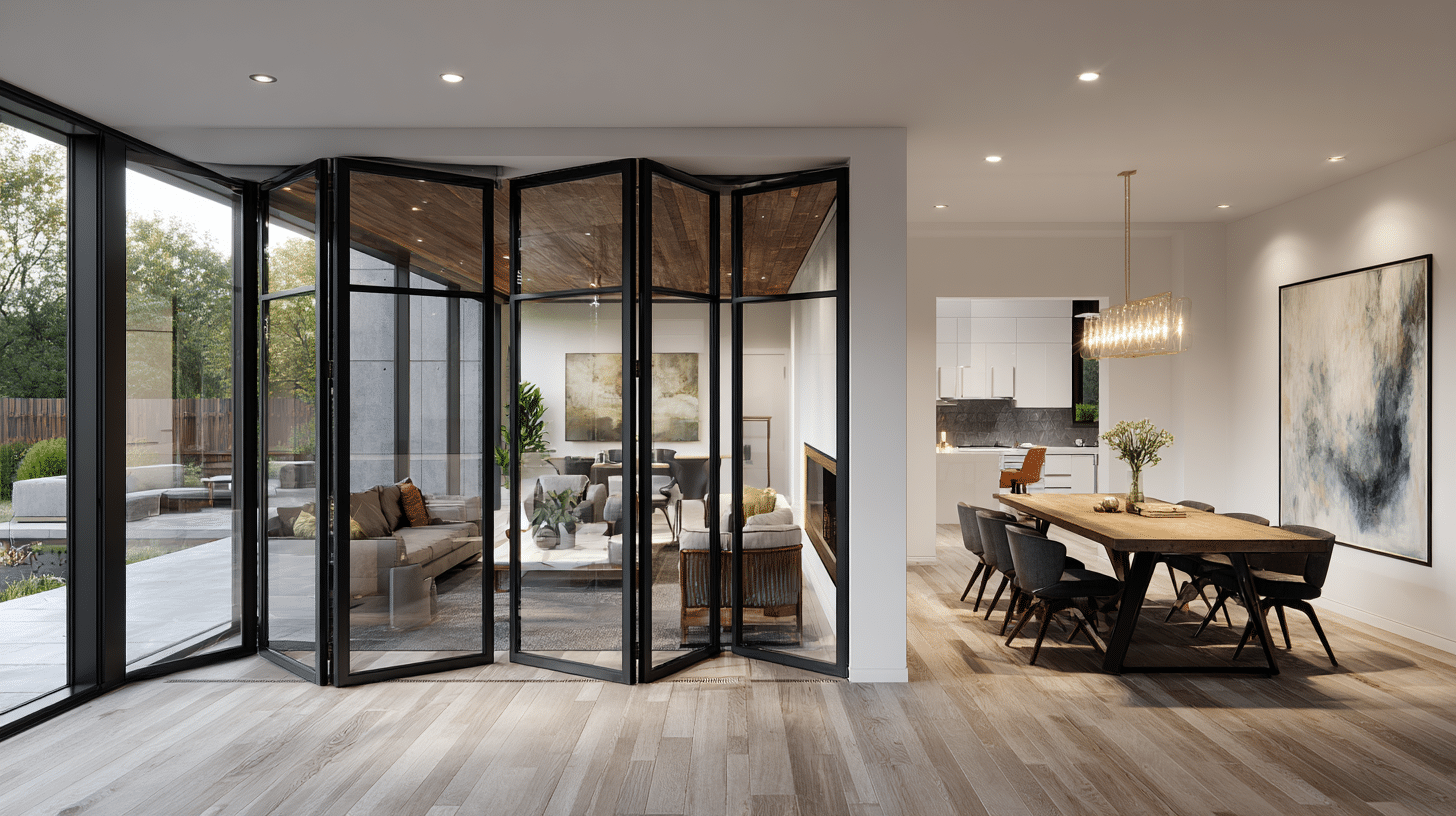
Multiple panels fold like an accordion to open completely or partially. Perfect for large openings or room dividers.
They offer flexible space control and work well in modern homes where you want to easily combine or separate areas.
Each interior door styles serve a different need. Consider your home’s architecture, your lifestyle, and maintenance preferences when making your choice.
Interior Door Material and Cost Considerations
Your door material choice affects both your budget and your home’s long-term durability. Here’s what you need to know about costs and performance.
| Material | Cost Range | Pros | Cons | Best For |
|---|---|---|---|---|
| Hollow Core | $30-80 | Lightweight, budget-friendly | Poor sound blocking, dents easily | Closets, low-traffic areas |
| Solid Wood | $150-400 | Durable, classic look, good insulation | Heavy, expensive, needs maintenance | Main living areas, traditional homes |
| Solid Core | $80-200 | Good sound control, stable | Heavier than hollow core | Bedrooms, offices |
| MDF/Composite | $60-150 | Smooth finish, paint-ready | Not moisture-resistant | Most interior spaces |
| Glass Panel | $200-500 | Natural light flow, modern appeal | Less privacy, breakage risk | Offices, modern homes |
| Barn Doors | $100-300 | Space-saving, trendy style | No sound barrier, track needed | Bathrooms, closets |
Consider your specific needs and budget. Higher upfront costs often result in better performance and longer lifespans for your doors.
Choosing the Perfect Door Style
Selecting the right door style requires striking a balance between function and your home’s overall design.
- Match your home’s architectural style and existing trim
- Consider room function, privacy versus light flow needs
- Measure doorway space for swing clearance and fit
- Choose durable materials for high-traffic area doors
- Coordinate hardware finishes throughout your entire home
The perfect door choice strikes a balance between your practical needs and personal style. Take a moment to consider how each option aligns with your lifestyle.
Key Takeaway
Interior door styles shape your home’s character more than any other single design element. The styles we’ve covered offer something for every home and budget.
Don’t rush this decision. Take time to consider how each room functions, what materials fit your maintenance preferences, and how your choices will look together.
Quality doors are investments that enhance both your daily experience and your home’s value.
Ready to turn your space? Start by identifying your must-have features, then find the style that brings your vision to life

